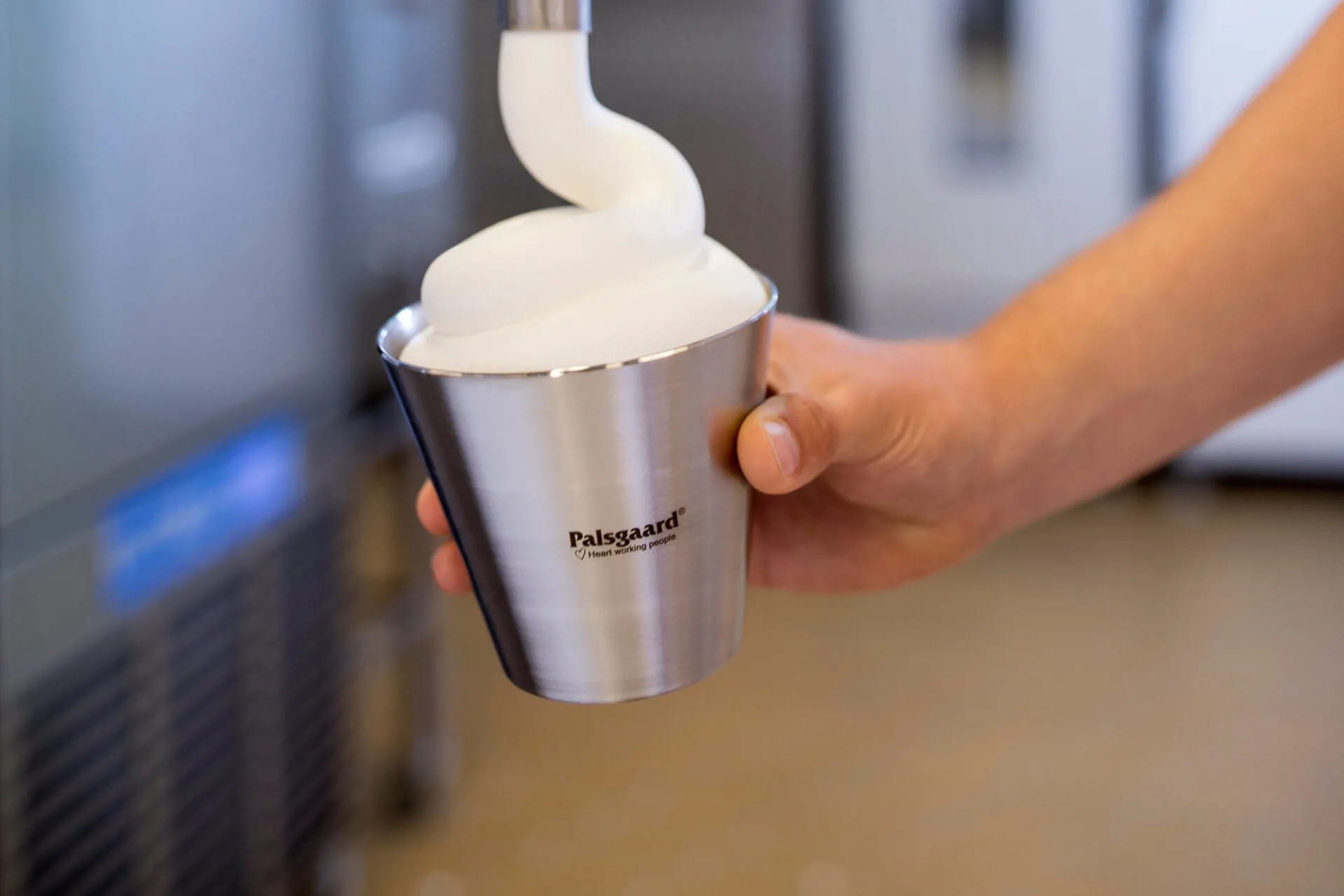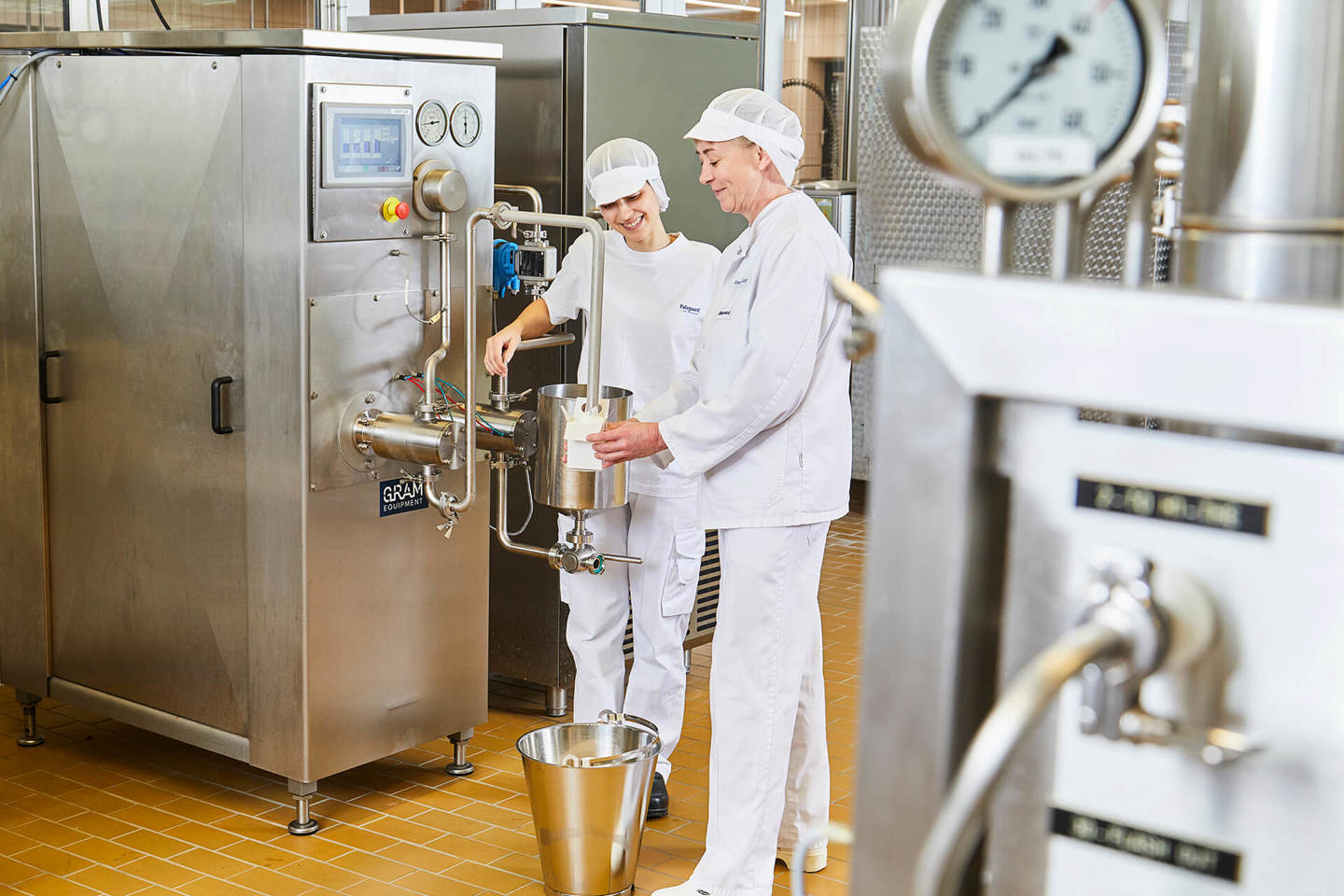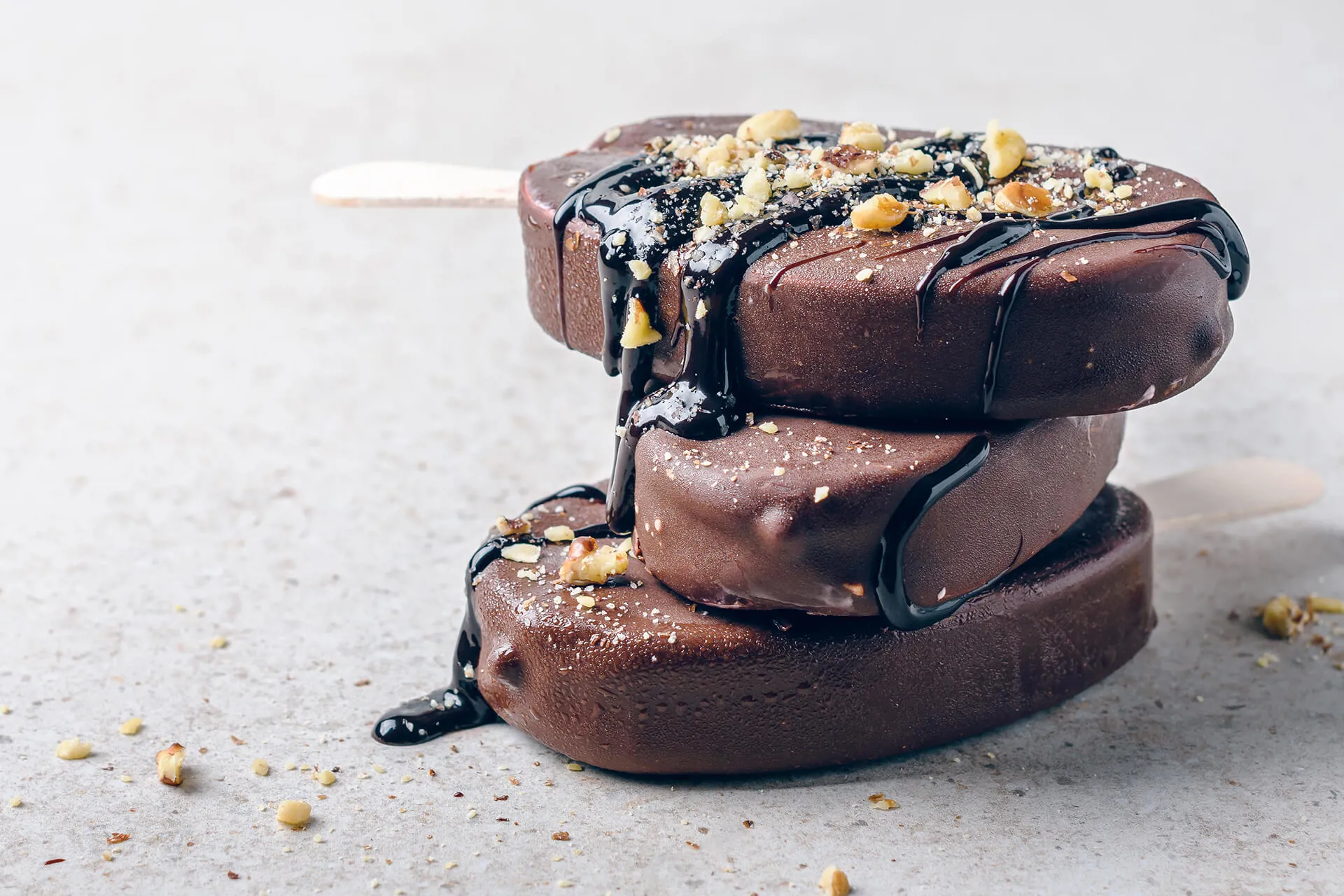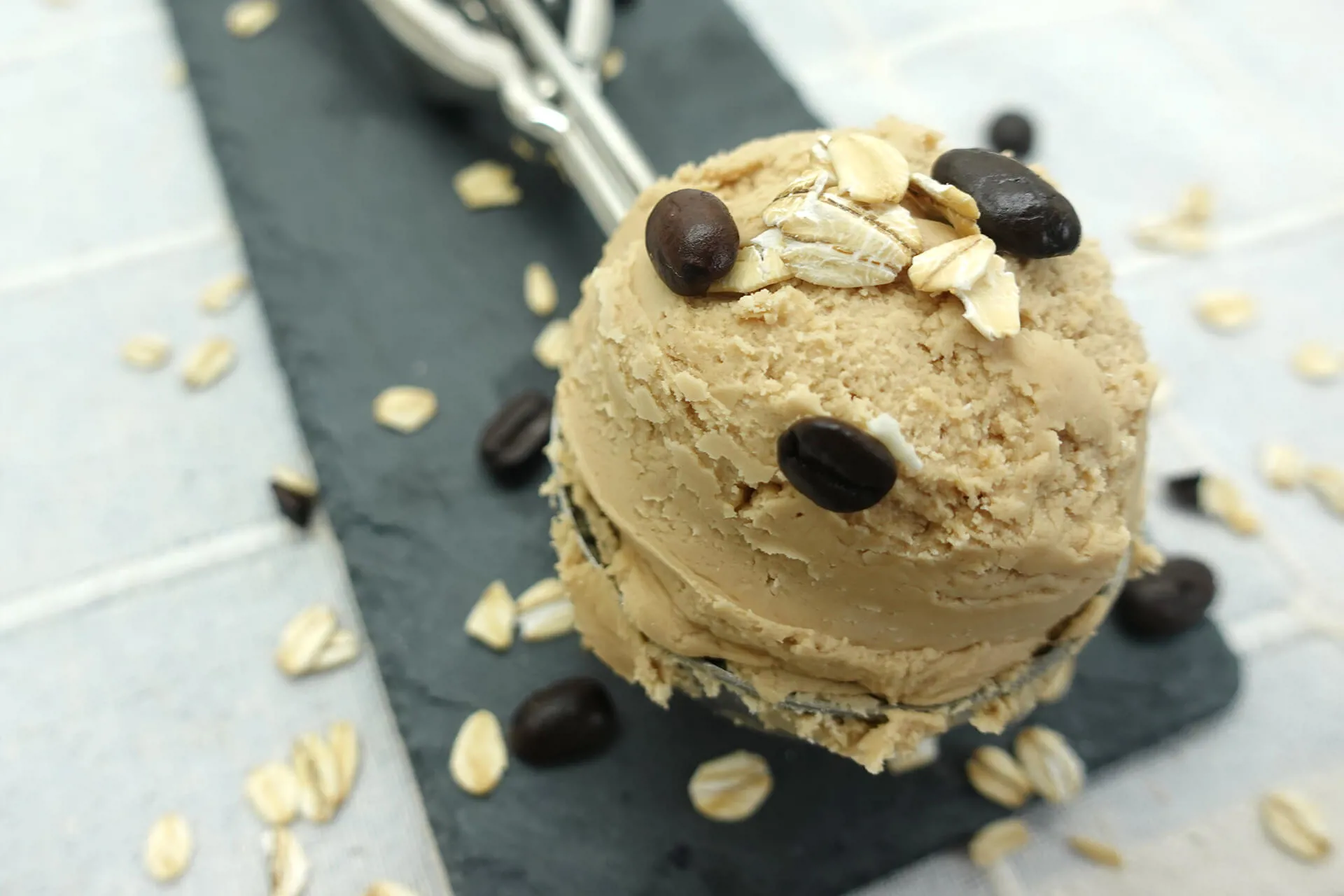
TROUBLESHOOTING BY PALSGAARD
TECHNICAL ARTICLE
The market for high-protein ice cream is growing but consumers are increasingly demanding products with the same mouthfeel and creaminess as traditional ice cream. To help customers overcome this challenge, emulsifier specialist Palsgaard set out to develop two inspirational recipe suggestions for soft and creamy high-protein ice cream. Here Claus Prior Hansen, Palsgaard’s Application Manager for ice cream, reveals what his team learned in the process.
“It makes the world of difference to choose the right protein source – it’s really critical. It’s not so much the kind of raw material you use, because usually, that’s some form of whey protein, but about working together with the protein supplier to get the right protein product.”
– Claus Prior Hansen, Application Manager, Palsgaard A/S

The first half of 2021 has already seen more launches of high-protein desserts and ice creams than the whole of 2016.* “It’s been an important trend for the last five years at least,” says Claus. “There’s a general consensus among ice cream producers that you should have at least one product in your portfolio that makes a high-protein claim. In fact, it’s now probably at the same kind of level as low-fat or reduced-sugar.”
One of the reasons for this, he explains, is the attractiveness of ‘permissive indulgence’. “Ice cream is generally seen as an indulgent product, but there’s also a big focus on health. You can address that by reducing fat, but then you get an ice cream that can be less pleasurable to eat. Making ice cream a source of protein is a good solution because consumers know that they’re eating a dessert, but they’re also getting a bit more protein in their diet.”
He highlights particular appeal for specific consumer groups: “You sometimes see high-protein ice cream being sold in gyms to consumers who want their post-exercise protein hit, and I think we’ll see even higher sales as people get back to their workouts after the pandemic. It’s also a good solution for older people who don’t eat very much and others that would benefit from a higher concentrated protein source to cover their intake, and ice cream is an easy-to-consume format for delivering these proteins.”
Claus and his team have just completed a long project to help manufacturers overcome common challenges in the category. “When consumers try a high-protein ice cream, probably the main thing they’ll notice is the mouthfeel,” he says. “It might not feel as creamy as a traditional product, and the texture might be a little shorter. We wanted to minimise those kinds of differences.”
The result was two new ice cream recipes – one with 10% protein and one with 15%. Working on the basis of percentage was a very deliberate decision. “Keeping in mind that claiming “high protein” isn’t based on the total amount of protein in the ice cream, but on how much protein contributes to the total energy of the ice cream, which must be at least 20%,” Claus says. “A half-litre tub of ice cream might contain 21g of protein, but that’s not great if you have to eat the whole thing. Also, a claim like ‘7g of protein per portion’ can be very confusing, because everyone has a different idea of what a portion is. That’s why we took the decision to work by percentage or grammage by 100g.”
EU regulations on protein claims work on the basis of how much the protein contributes to the total energy of the product, and not by how many grams of protein per 100g of ice cream. If the protein contributes at least 12% of the energy of the product, manufacturers can claim “source of protein” and if it is at least 20% “high protein” can be claimed.”**
Claus is in no doubt about the most important lesson he learned when working on the recipes. “It makes the world of difference to choose the right protein source – it’s really critical. It’s not so much the kind of raw material you use, because usually, that’s some form of whey protein, but about working together with the protein supplier to get the right protein product.”.
“We found it quite hard in the beginning because we were using standard high-protein milk or whey powders and the end results weren’t great. They were watery, or sandy, or just not very nice to eat. The stability of the product over shelf-life wasn’t good either. We realised it wasn’t working so we took a bit of a break, then we spoke to two specialist protein powder manufacturers, and they both had the right solutions which made all the difference. You’re relying heavily on the supplier to make the right adjustments, so you really need to find one with the expertise to know what’s going to work.”

However, it doesn’t end with the right protein source. After that, manufacturers have to make further recipe adjustments to ensure they have the right balance of ingredients. “In our case, we had to change not just one thing but two or three,” Claus says. “We took out some milk powders and replaced them with concentrated protein powders. We also needed to have ingredients in the recipe to lower the freezing point to make the product softer, so we replaced the sugar with sugar alcohol, which also helped lower the carbohydrate content. Finally, we reduced the fat content to 3-4%. So we ended up with a recipe that wasn’t just high in protein, but also low in sugar and fat.”
Depending on your protein source, you may also have to adjust your processing. “That’s critical too,” Claus says. “Some of these proteins are more heat-sensitive, so you might need to lower the pasteurising temperature, and in combination with extending the holding time to ensure you get a safe product for the consumer. Also, if the protein is heated too much, it can form a gel like an egg-white, which can cause blockages in your plant. So it’s really critical that you have a dialogue with the protein supplier about the changes you might have to make.”

One ingredient combination you probably won’t have to change is your use of emulsifiers and stabilisers. “You still need an emulsifier to control qualities like melting resistance and creaminess, and a stabiliser to improve mouthfeel,” Claus explains. “However, they work in much the same way they do in standard ice cream products. We found that the higher protein content of these recipes didn’t make much difference, because emulsifiers are more strongly associated with fat globule membranes than the protein.”
So as with standard ice creams, your choice of emulsifier isn’t about the amount of protein you have, but the kind of mouthfeel you want. “Any of Palsgaard’s emulsifiers and stabilisers for ice cream will work well in high-protein recipes,” Claus says. “We used Palsgaard® ExtruIce 352, which is a palm-free integrated blend of emulsifiers and stabilisers with only three ingredients. In the end, we were able to create two great high-protein recipes, with good body, mouthfeel and creaminess. And we’re inviting all our customers to try them!”
* Innova Market Insights
** Rules can vary from country to country, so it is always essential to check local regulations.

TROUBLESHOOTING BY PALSGAARD

TECHNICAL ARTICLE

TECHNICAL ARTICLE

TECHNICAL ARTICLE

TECHNICAL ARTICLE

TECHNICAL ARTICLE

TECHNICAL ARTICLE

TECHNICAL ARTICLE